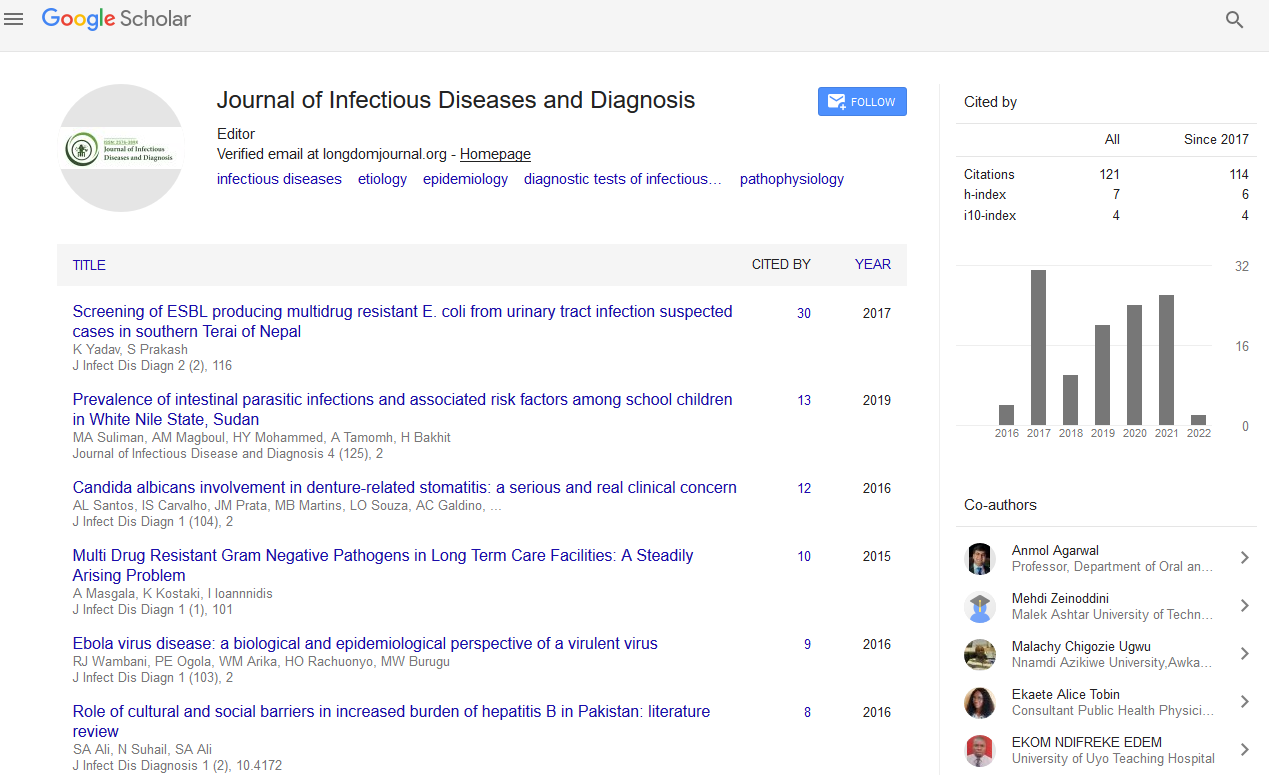Indexed In
- RefSeek
- Hamdard University
- EBSCO A-Z
- Publons
- Euro Pub
- Google Scholar
Useful Links
Share This Page
Journal Flyer

Open Access Journals
- Agri and Aquaculture
- Biochemistry
- Bioinformatics & Systems Biology
- Business & Management
- Chemistry
- Clinical Sciences
- Engineering
- Food & Nutrition
- General Science
- Genetics & Molecular Biology
- Immunology & Microbiology
- Medical Sciences
- Neuroscience & Psychology
- Nursing & Health Care
- Pharmaceutical Sciences
Abstract
UNAIDS “90-90-90”: Fighting HIV Stigma and Discrimination Needed to End HIV as a Global Threat by 2030
Gary Blick and Jeannette M. Wraight
Thirty-six years after the initial cases of what would become known as AIDS-related conditions were reported, the Human Immunodeficiency Virus (HIV) has infected over 70 million people, killed almost 35 million, and left 36.7 million People Living With HIV (PLWHIV). Realizing that, without the rapid scale-up of ART, the HIV/AIDS epidemic would continue to outrun the global response through the end of 2015, the 2014 UNAIDS “90-90-90 Fast Track Strategy” has laid the groundwork for global development strategy over the subsequent 15 years, including ending the AIDS epidemic by 2030. To accomplish this ambitious goal, the number of new global HIV infections needs to decline to less than 500,000 annually.
The key to achieving the “90-90-90” strategy is the “Test and Treat” strategy adopted by the World Health Organization (WHO), but, to be successful, all HIV-positive marginalized and vulnerable populations will need to be informed, empowered, mobilized, and engaged. There are numerous challenges that realistically must be addressed and enormous barriers that need to be overcome to successfully end HIV as a global health threat. Understanding, fighting, and overcoming HIV stigma and discrimination remains one of the greatest challenges faced.


